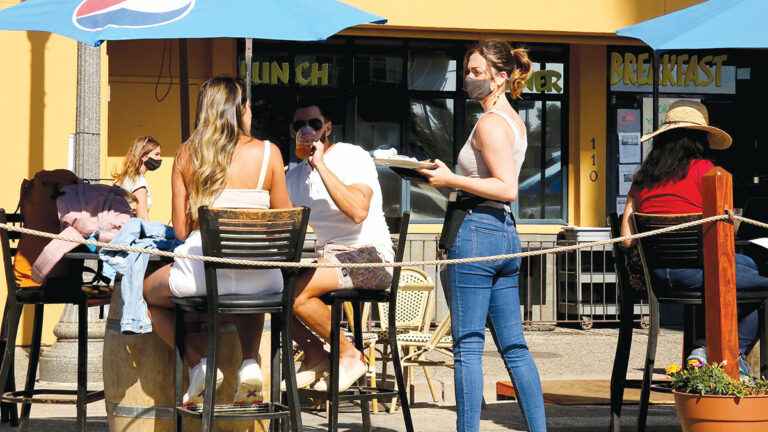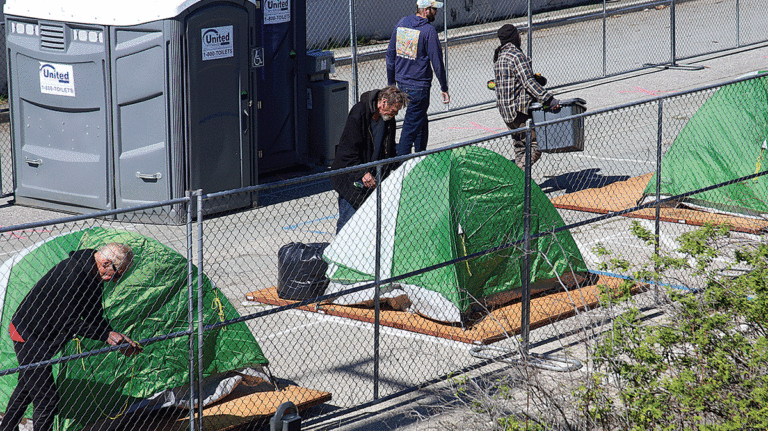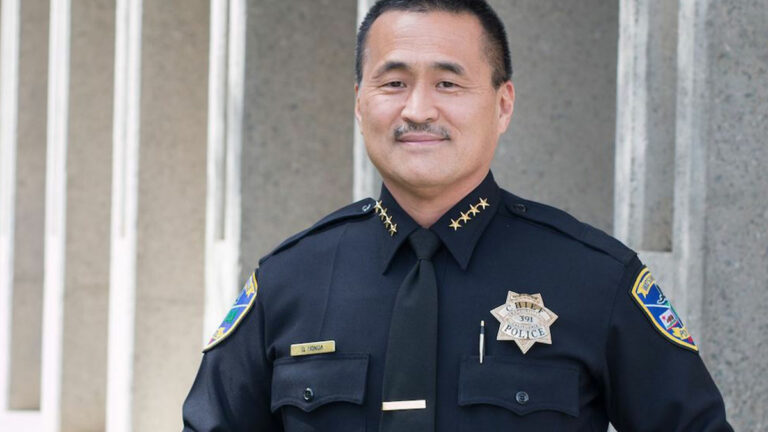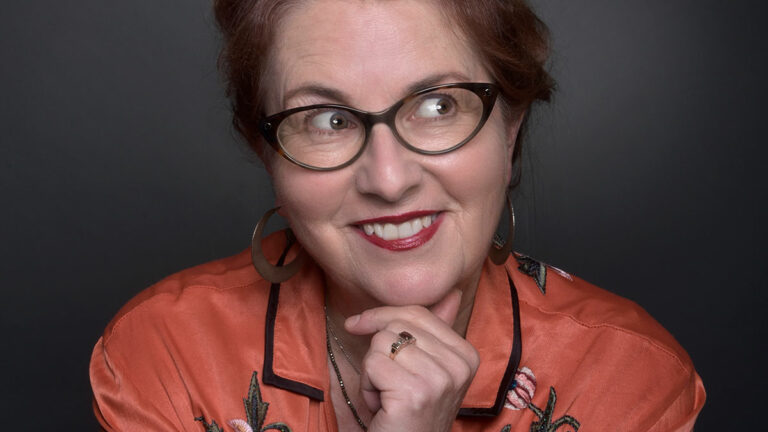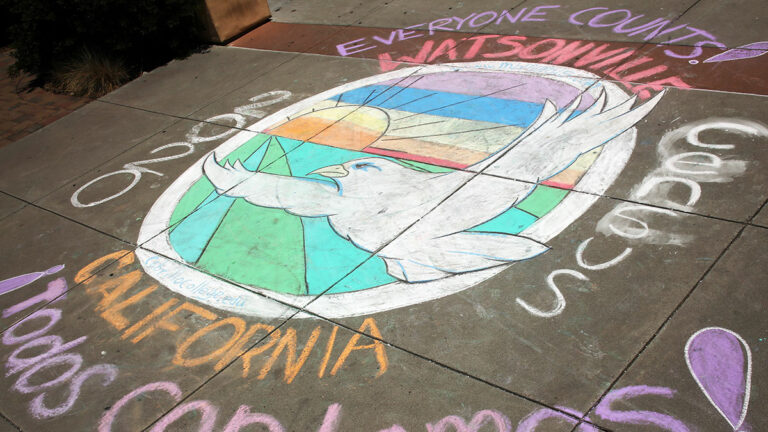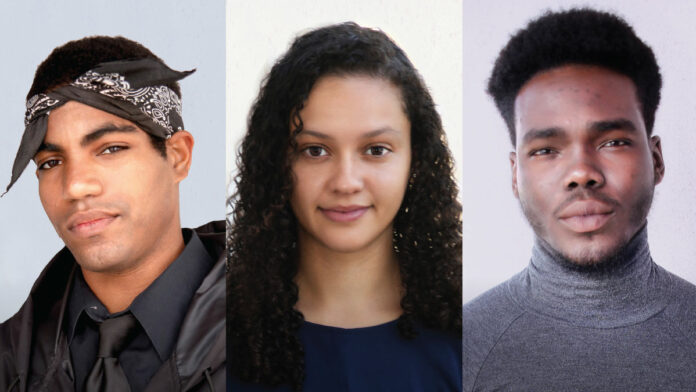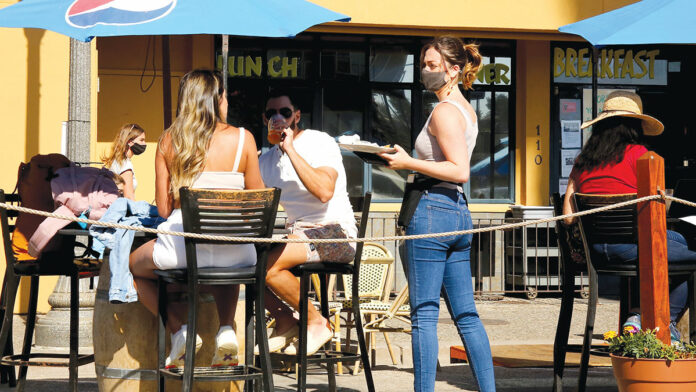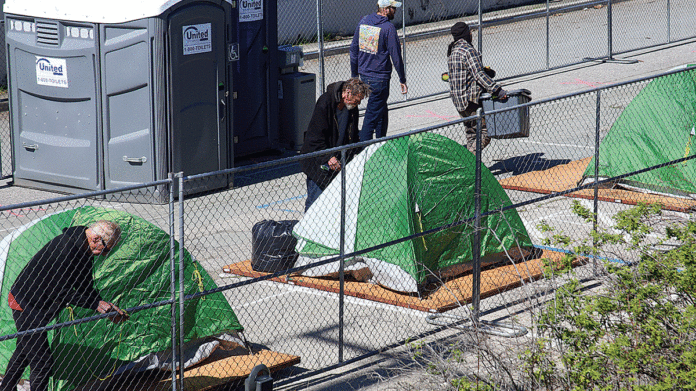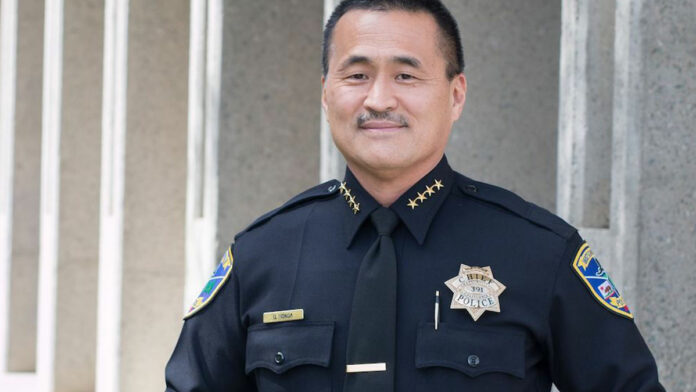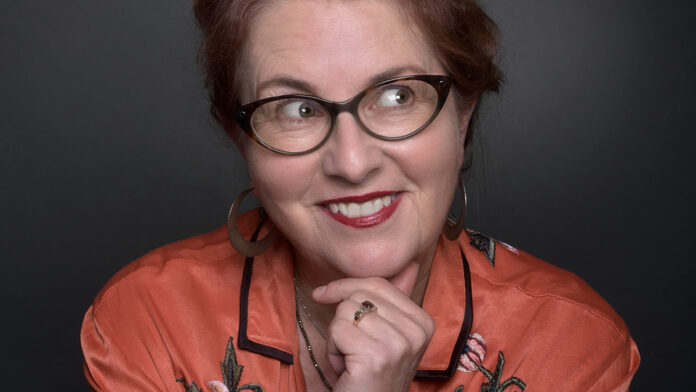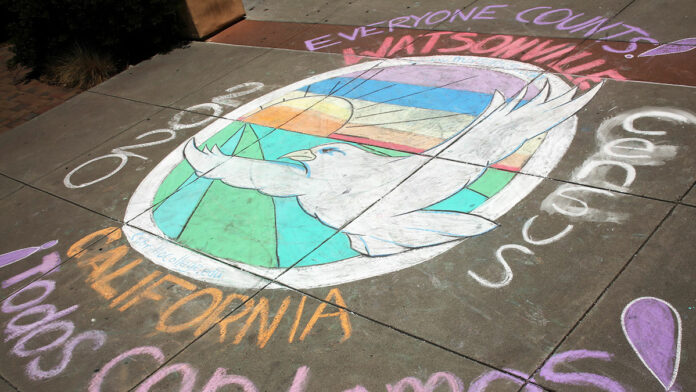In recent months, Black Lives Matter protests have erupted across Santa Cruz as thousands of citizens demand an end to systemic racism and police violence. Part of what’s remarkable about these protests is that by and large, it’s Santa Cruz youth activists on the forefront of organizing actions to demand change.
“I think young organizers, what we understand is time. But not in the sense that we want to wait, in the sense that we can’t wait. Because if we don’t do it, which part of society will?” says 21-year-old Ayo Banjo, president of UCSC’s NAACP chapter.
Even as activists like Banjo capture their moment to fight for racial justice, they do so with a bedrock of respect and admiration for those who came before them.
“I believe that we’re building on the backs of giants like Malcom X, like Martin Luthur King, like Fannie Lou Hamer, like Rosa Parks. And that’s why I’m so committed to the work that we do,” says Banjo. “The potential—with the right imagination—to build a version of society, or a community that our ancestors dreamed about, is tangible, is right at our footsteps.”
This reverence for elder activists is a common thread among Santa Cruz’s contemporary organizers, who say it is their duty to pick up the torch.
“I think it’s our responsibility as the youth to pick up where our elders left off. They have done the work and they have been marching for years and years and years, and I understand how, naturally, that’s exhausting,” says Esabella Bonner, 24, who has organized two Black Lives Matter protests locally. “A lot of them have been silenced throughout the years through policies, through procedures, through just the system in itself.”
We spoke with Banjo, Bonner and local organizer Thairie Ritchie to find out what changes they’re fighting for and how they’re making it happen.
Esabella Bonner: ‘This is a Moment to Listen’

For Esabella Bonner, protesting is nothing new. “As far as activism goes, I’ve always been very vocal,” says the Soquel High and San Jose State graduate. “I’ve definitely attended a wide range of protests throughout the years.” Still, Santa Cruz’s May 30 action for George Floyd, organized by local Joy Flynn, struck a specific chord.
“Seeing this beautiful Black woman hold so much space for everyone was the most beautiful thing I’ve ever seen. I had never felt so represented being in Santa Cruz,” says Bonner, who is biracial. “It was silent and powerful and I just started sobbing in my car. I felt like, ‘Wow. These people do see me.’”
A downtown protest the following day hit a more sour note for Bonner when many white attendees used the open mic portion of the event to express their own thoughts on racism and police violence.
“I was so disappointed by how many allies felt that it was their moment to speak to the community, how many people who weren’t Black, experiencing the Black experience in Santa Cruz, felt that we needed to hear their song in that moment. It really bothered me,” she says. “This is the moment to listen. How often do we all have the opportunity to hear from such a diverse range of Black and brown voices in our community?”
These two experiences, coupled with the momentum of the nationwide Black Lives Matter movement, created a “perfect storm” for Bonner to organize her own action for the very first time.
Since then, she’s successfully curated two protests—on West Cliff Drive and through Capitola Village—where the microphone was reserved exclusively for BIPOC speakers.
“A lot of people, even inadvertently, will use the momentum of something else to get their message across. So for me, it’s about ensuring that we are putting Black voices at the forefront of this conversation and continuing to do so,” says Bonner, “making sure the narrative does stay on the Black Lives Matter movement and the peace, love and equality that we’re fighting for.”
Bonner’s choice of wealthy, tourist-centric locations for the events—which collectively drew thousands of attendees—was equally intentional.
“There are a lot of pockets in Santa Cruz that Black and brown people straight up avoid, Capitola being a huge one of those. It was really important to me to give that space to folks there—disrupting West Cliff, disrupting these beaches and really allowing us to take over some of the spaces we avoid,” she says.
In addition to organizing marches, Bonner is meeting weekly with the Santa Cruz Police Department Chief Andy Mills and Black leaders in the community. “It started with voicing our concerns, but now we’re really getting to those actionable steps of, ‘Where can you show up for us? Where can the Santa Cruz Police Department make improvements that start here and actually, maybe, hopefully, spark that change nationwide?”
Right now, she says, she and other organizers are working through the “nitty gritty” of what these changes would look like and “locking in what we want collectively as a community.” While this process takes time, Bonner says she’s hopeful for the future and does feel like the leadership is listening.
Until those details are worked out, Bonner is hesitant to speak on specific policy changes, but in general is calling for a shifting of police culture and increased accountability. “There’s no police review board,” she says. “That used to be overseen by the community.”
In the early 2000s, SCPD’s seven-member citizen review board was replaced by a single police auditor who handles all citizen complaint investigations and reviews the department’s own internal affairs investigations.
Bonner is also calling for a reallocation of police funds—which currently comprise about 28% of the city’s total general fund expenditures—toward alternative community services like mental health support and social workers to respond to community needs 24-7, along with increased education funding.
“Ultimately, it’s about figuring out where we can invest our dollars to best support our Black community,” she says.
Going forward, Bonner says she will continue to organize, march and fight for the Black Lives Matter movement, including planning another protest—likely on August 5. So far, she says she’s grateful for the community support she’s received from attendees.
“I just want to say thank you for continuing to show up, and I hope that that momentum continues until every single person in this community feels valued and heard and safe,” she says. “It’s been so empowering how many people go to a march and are now inspired to organize their own. It’s the perfect chain reaction and it’s been beautiful to see.”
Thairie Ritchie: ‘It’s a Very Unbelievable Feeling’

One of the people motivated by this chain reaction was Thairie Ritchie, who after attending the march on West Cliff got inspired to plan his own. For Ritchie, what started as an idea he posted to Instagram turned into organizing a protest with a dozen speakers, attended by hundreds of locals, all in a span of just over a week.
“Honestly it’s a very unbelievable feeling,” says Ritchie, 24, who describes himself as a natural introvert. “It’s still a lot to take in, but I’m taking more ownership and pride over what I was able to accomplish.”
At the June 19 protest called “Juneteenth to Allegiance,” attendees marched from the Louden Nelson Community Center to the steps of Santa Cruz City Hall, where speakers shared personal accounts of racism they’ve experienced locally and called for an end to police violence and racial injustice.
Both the day of the Juneteenth march and the event’s location were deeply purposeful, Ritchie explained. “I really wanted to pay homage to the legacy of Louden Nelson,” says Ritchie. “A lot of people in the Santa Cruz community, even though they walk past the community center and see his name, have no idea about the man who’s behind that name.”
Nelson, a former slave, moved to Santa Cruz in 1856 and purchased a plot of land in town. Upon falling ill, he established a will donating the entirety of his estate to the Santa Cruz School District, “for the use and benefit of said School District forever.” His donation allowed Santa Cruz to open the first permanent schoolhouse in its history.
In addition to spreading community education, Ritchie hoped to inspire Santa Cruz youth like himself to get more politically involved.
“With the protest, I really wanted to reach out to the younger generation, the 18-to-24 folks, to help them realize that their influence can make a difference if they use their powers of voting and activism,” he says. “Every aspect of our society has become more and more divisive. I feel it’s crucial going into the (election) year to come together and vote for changes to uplift our community moving forward.”
Outside of the protest sphere, Ritchie penned a petition called the Bad Apple Bill, which has already garnered more than 600 signatures. Via the petition, he is calling for decreasing mass incarceration, eliminating police brutality and methods of excessive force, eliminating the police quota system and establishing protections for whistleblowers within law enforcement.
“I feel that police training needs to be totally revamped … providing them with more societal-based education like sociology, African American studies and Latino American studies,” says Ritchie. “A lot of our law enforcement are going into communities they’ve never been in, dealing with a lot of societal situations they’ve never seen.”
He also echoes Bonner’s call for a reallocation of police funds to other avenues. “As far as defunding, I feel that the term should be referred to as community funding,” says Ritchie. “Especially in the downtown Santa Cruz community, a lot of mentally ill patients who are homeless deal with policing as a result of their illness. I feel there should be alternative services to benefit those most vulnerable in our community.”
When it comes to local changes already taking place—like the banning of the chokehold restraint and predictive policing technology—Ritchie gives leadership credit, but says they’re moving too slow.
“I feel like it’s baby steps toward what the ultimate goal should be,” he says. “Given these very divisive times we’re living in and given the times of Covid, people are not guaranteed to see these changes that they’re proposing. I feel they should really be more urgent.”
In addition to addressing policing, Ritchie says he wants to shine a light on racism within Santa Cruz’s local business scene.
“They should focus more on the internal issues they have, because growing up as a Black male in Santa Cruz, I felt uncomfortable going into a lot of businesses, you know, being stared at or looked at suspiciously,” says the Natural Bridges High School and Cabrillo College graduate. “I always felt I needed to conduct myself in a certain way to not look suspicious or be mindful of how I’m going about things in the store. That’s definitely an issue.”
Furthermore, Ritchie says he wants businesses to better support their employees of color in Santa Cruz. “There’s definitely been a lot of systemic racism within the workplace in Santa Cruz,” he says, citing an increase in racist incidents and hate crimes as the Black Lives Matter movement gains momentum nationwide. “I feel it’s always kind of been there but I’ve definitely seen it happening more and more.”
For Ritchie, education is one of the best ways to address these issues. “The people who are in the dark, who might feel these racist sentiments, aren’t as educated or informed about the issues,” he says. “That’s why with the protest I was really urging the community to educate themselves: What are the issues behind systemic racism? Why are our communities of color feeling the way they are?”
Ayo Banjo: ‘I Call This a New Dawn’

As a college freshman, Ayo Banjo became the youngest person in the UC system ever elected to be student body president, and the first Black man at UCSC to hold the post.
During his tenure, Banjo secured $500,000 to support housing justice for students facing eviction, helped push for campus police reforms including the use of body cameras, and bolstered access to safe parking for students sleeping in cars on campus.
Now entering his senior year, Banjo serves as president of the NAACP’s UCSC chapter, and says these changes are just the beginning.
“I feel that we could really utilize what’s going on right now in the entire country to give life to a completely new model of public safety, of community support, of everything,” he says of the nationwide momentum behind the Black Lives Matter movement. “I think this moment calls for a new formula for what it looks like to ensure Black success, ensure Black development and foster diversity in different cities. So I want to really take this moment in and also appreciate the community that has continued to support us in the work that we do.”
In the short term, Banjo is calling for the disarming of police on campus, increased community oversight and additional research—led and facilitated by Black youth organizers—on how the current status of police budgets, response calls and arrests actually correlate, or do not correlate, with increased community safety.
Doing this research, he says, will help highlight where police are failing to protect the whole community and what other services, like mental health or housing support, could be more effective in achieving that goal.
“I call this a new dawn for data-driven Black youth organizing,” says Banjo. “We can’t just completely wipe out an institution: We have to provide an alternative. If you want to have a longer conversation about alternatives to policing, we have to be able to provide that model, which means we have to have the research. So the process of getting there is what we’re working on right now.”
The process of scouting effective alternatives to policing is the beginning of what Banjo and the UCSC NAACP are calling a “community refund.”
“The community refund is an ideology; it’s an idea. It’s a commitment to really looking at what is going to make our community safer,” Banjo explains. “We want to focus on the community being the priority. If one of our community members is hurting, like the Black community, or our displaced, our at risk, our vulnerable, then we need to be able to invest in what they need.”
While reallocating funds away from policing and toward community services is one way to make this happen, it’s not the only way. Banjo also wants to see changes within economic development institutions like the Santa Cruz Chamber of Commerce, the Downtown Association and the Santa Cruz County Business Council.
“I think it’s really important that we look at the economic development institutions that are supposed to already be playing this role for Black people and ask ourselves the question: Why are they failing so badly? Who are they really here to serve?” asks Banjo. “We’re looking at them to see what they do to respond to this moment where people are demanding justice for the Black community, for reparations for the fostering Black businesses and fostering the growth of wealth for our Black communities.”
Going forward, Banjo would like to see these institutions diversify their boards, push for policies that directly benefit Black wealth, Black-owned businesses, and bring Black leaders into their planning and development conversations in a holistic, inviting way.
“When we talk about reparations, when we talk about being able to bring more Black folks into the community, it’s not about helping somebody and giving free handouts, just to be clear. It’s about giving what was given to all the white families in the past. Now we’re just applying justice in real time,” says Banjo. “Once we support the most hurt group in our economic system, we support everyone.”
For those looking to assist this work, Banjo and the UCSC NAACP created a Community Action Network—which already has 200 plus members—to help Santa Cruzans get organized in pushing for change.
“It is inspiring to see the cross-racial coalition building that we’re doing at the NAACP UCSC branch,” says Banjo of the diverse network developed so far. “We’re appealing to ideals, to people’s values that are larger than just giving justice to one group, but the fact that we believe in justice, the fact that we believe in each other is what the movement is about.”
After graduation, Banjo plans to pursue a master’s in public policy and maybe even run for office one day. “I feel very lucky because I do feel like I found my passion at such a young age,” says Banjo, who is a politics major. “Ultimately, I’m committed to fighting for equity, equality and justice for all.”






